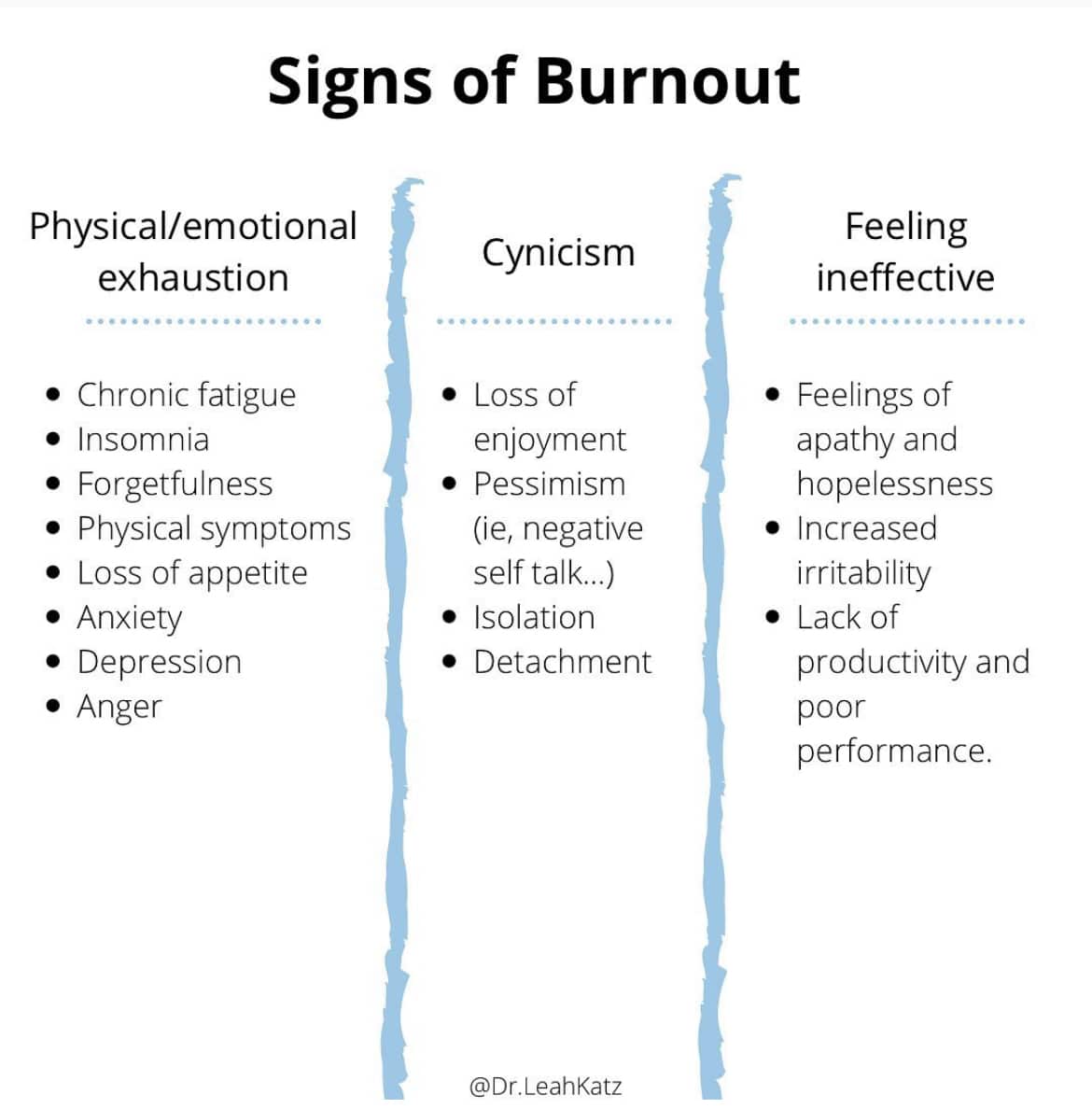by California Casualty | Educators |
Written by Casey Keyser, MSEA Third Grade Teacher
 I don’t need to tell anyone in the school system how difficult the last year and a half was for education. Not just for teachers, but for bus drivers, principals, parents, students, and everyone in between.
I don’t need to tell anyone in the school system how difficult the last year and a half was for education. Not just for teachers, but for bus drivers, principals, parents, students, and everyone in between.
Teaching during a pandemic was by far the most difficult thing I have encountered in my career. It is hard to believe that anything good could come out of a year of lockdowns and virtual learning, let alone find the silver lining… But I am here to tell you… with every storm comes a rainbow.
It’s time to find that rainbow and help ourselves and our students with this upcoming school year. We must move forward and celebrate the skills we acquired throughout the storm.
Take a second to reflect… not on the bad but on something you learned this school year. Was it how to mute and unmute? My students taught me a fancy trick using the space bar!
Did you learn to use an online assessment tool like Kahoot! Or Quizizz? Did you connect with parents at a moment’s notice online using Zoom or Google Meet? Who knew we would be video conferencing with our students and families!
Were you finally able to start using a digital planner instead of your paper one? This has been my favorite new transition, I will never go back.
All of these things and SO MUCH more are the wins of having to teach virtual or hybrid this past year. You were encouraged to be an early adopter of tech tools and new devices like no other time before. But you dove right in to learn new skills and now you have experience with things like recording a screencast to give students directions or creating a complete interactive classroom with Google Slides and your Bitmoji.
If you’re on Facebook and you haven’t joined this teacher group yet… it is the rabbit hole of all rabbit holes. You will have access to FREE teacher resources that will help build engagement in your classroom using your Bitmoji. Join here now!

It’s time to celebrate YOU for all you have learned. I am proud of you for getting out of your comfort zone and I promise you, you are a better educator for it.
So now what… you know all of these new and exciting skills, what do you do with them? Are you excited to get back into the classroom and go back to normal? This is an overwhelming, “NO!” This is your time to shine and take this great opportunity to start reimaging what schools can look like. Be that trailblazer that reflects on the things that got easier because of your new skills. Challenge yourself and your colleagues to think outside the box. Make this year the best year yet!
As you start to set up your new classroom think of ways you can incorporate those virtual learning skills into the new school year. You might not be virtual or hybrid anymore but you can still create digital libraries, have students record Flipgrid videos, go on virtual field trips around the world and so much more.
I know the one thing I will never go back on is parent/teacher conferences. I was able to meet with each and EVERY one of my parents (multiple times) over Google Meet during this past school year. I have never felt more connected with them and we both had the flexibility to do it from wherever was best.
What is one thing you would continue to implement this school year?
Before the pandemic, I had a difficult time teaching the students simple tech skills and they were in front of me in the classroom. They had trouble logging into their computer, remembering their passwords, and finding certain button icons on the screen to help troubleshoot any situation. During virtual learning, this became even harder. The students were not in front of me anymore to help them over their shoulder. I had to get creative with creating multiple tech tool button cards. The cards are a good visual of what each button is and what they are used for. I was able to hold them up to the screen so the students could see where to go. I will continue to use these when we get back into the classroom to make learning tech tools easier. I have created buttons for basic Internet browsers, Canvas, Google Meet, Zoom, Pear Deck, and Schoology. They truly are a game-changer, I couldn’t imagine going back to before I had them.

The second resource that I can’t live without is my tech tool username and password display cards. Simply print these out and add your class code or password. I add them to a ring and hang them at the front of the classroom for all students to be able to access. It is a great way to never forget your codes and to build agency with your students.

All these things and more are like letting the genie out of the bottle, I don’t think he’ll ever go back in. All we can do is learn from the skills we acquired and make the education system even better than before.
As we look forward to this upcoming school year, please try to remember the good that came from this very difficult year. There are so many bright colors in the rainbow and you just have to find them!

Casey Keyser is a third-grade teacher at Butterfly Ridge Elementary in Frederick County, Maryland. She was recently recognized as the national winner of the NEA Foundation’s 2021 Teaching in Excellence Award. Casey is the proud owner of the Education Resource Blog, Fair Winds Teaching, and loves to connect with her education community through her TeacherPayTeacher’s business.
by California Casualty | Educators |
Written by Casey Keyser, MSEA Third Grade Teacher
 Teachers are like solar panels, we recharge in the Summer. However, this shouldn’t be the only time we recharge. We should have an ongoing plan to help energize ourselves daily and when done so correctly, rarely need a recharge at all.
Teachers are like solar panels, we recharge in the Summer. However, this shouldn’t be the only time we recharge. We should have an ongoing plan to help energize ourselves daily and when done so correctly, rarely need a recharge at all.
Let’s talk about teacher burnout…
Are you missing happy hours or Sunday brunch with friends most weekends? Are you declining family time or weekend trips because you, “had” to lesson plan or, “needed to” to get your grading done?
Did you volunteer for that committee or club because you thought it would look bad if you didn’t?
Are you spending your duty-free lunch breaks completing paperwork, working with students, or emailing parents?
Have you arrived at school 2 hours before students arrive to be prepared for your day?
For me… it’s an overwhelming YES, YES, YES ….. & YES.

Each and every day, teachers GIVE so much to our students. Of course we want to do anything and everything for our students all the time. But is it healthy or sustainable over time?
NO, you will burn yourself out!
Teacher burnout is a very common problem that needs to be talked about more. I believe it is hard to identify if it’s happening to you because, “You can’t read the label, when you’re stuck inside the bottle.” For some teachers, it’s hard to understand and accept when it’s time to start saying, “No,” and take a break.
These difficult conversations need to happen. We have to start working together to normalize teachers saying, “No.”
Saying “No” isn’t always a bad thing. It can even be what’s in the best interest of your students.
Over my 11-year teaching career I have heard a lot of talk about having a good or healthy work-life balance. I have been given tips and tricks to maintain self-care and a happy life. But what no one ever talks about is that it’s not a “One size fits all” approach.
I do not believe in, “work-life balance.” I don’t think there is a magical formula of how each teacher can “balance” their work and their home life at the same time. I think that it should be called, “work-life fit.” A work-life fit is the flexibility to make choices for your own life that fits into what you have going on in that moment. You should be able to create a work environment and lifestyle that fosters both personal and professional life at the same time. As educators, we cannot compare ourselves to each other. What “fits” in one teachers’ life, might not “fit” into yours.
Your goal is to do only the extra things if it fits into your life at that moment. If it doesn’t, don’t do them. And if you are in a place to do extra things you want to for your classroom, do it. Don’t let anyone else shame you for going above and beyond in your career if that’s what fits in your life.
But if you are a teacher that doesn’t have the space and time for all the “extra” things, and you are still trying to squeeze them in, this is when you will experience teacher burnout.
Dr. Leah Katz @dr.leahkatz shared a graphic on signs of burnout. It is important to know what to look for, for yourself, your colleagues, and family members that are educators.

When I start to feel or see signs of burn-out I focus on two things – my mindset and setting boundaries. I have to keep my mindset focused that things will get better. Then I have to act to make that a reality.
I sit down to create a list of things I can take off my plate and specific goals on how I can set boundaries for new things that may come my way. Here is a list of the boundaries I have set for myself.
Don’t:
-
- Spend all evening/weekend working… I work on the weekends, but I don’t let it steal my entire time
- Skip breakfast… I love to meal prep on Sunday so that this doesn’t happen
- Drink only coffee… I am the worst at hydration so I make sure to always have a water bottle
- Stay past your contact hours… unless I am getting paid and I WANT to
- Check your email after 4 PM… just don’t do it, it can wait.
- Feel guilty about setting boundaries and saying, “No.”
- Lie awake thinking about school
However, I can choose to do some of these things once in a while, IF I think they fit into my life AND I know they bring me joy.
As we move into the new school year, I am already trying to find where I can pause for some peace. Where can I build time into my schedule to reflect and do tasks that calm me? I reflect on what energizes me and how I can surround my life with those things and people.
Give yourself grace. Give yourself time. Give yourself an honest talk about what “fits” with your life.
If you start to experience teacher burnout and you are aware of how to find your peace and calm, you will be able to better read the label on your bottle because you won’t be stuck inside anymore.

Casey Keyser is a third-grade teacher at Butterfly Ridge Elementary in Frederick County, Maryland. She was recently recognized as the national winner of the NEA Foundation’s 2021 Teaching in Excellence Award. Casey is the proud owner of the Education Resource Blog, Fair Winds Teaching, and loves to connect with her education community through her TeacherPayTeacher’s business.

by California Casualty | Educators |
It’s that time of year again that all teachers both love and dread- the end of another school year. With the last day officially on the horizon, you can practically feel the excitement (and restlessness) radiating off of students, but there is still work to be done before final grades are submitted.
With papers piling up and patience running thin how do teachers make it through this time of year to summer break?
Here are some end-of-the-year strategies and tips for teachers.
1. Count it down
Give students, and yourself, something to look forward to each day when they come to school by doing an activity that lets them count down the days until summer break. Need some countdown ideas that will keep your students engaged and motivated up until the very last day? Check these out!
2. Try something new!
You know that one lesson plan or activity that you’ve wanted to try, but just never had the time to do? The end of the year can and should still be for useful learning! If you have gaps in your lesson plans, it’s the perfect time to test new strategies that you have in mind and would like to incorporate into your classroom next year.
3. Stay in your routine as long as possible
Any experienced teacher will tell you that one of the best tips to navigate all of the craziness the end of the school year may bring, is to stay in your routine. Your students will catch on and reflect your behavior if you begin to wind down too soon. That being said you can play games and end of the year activities just be sure to keep your classroom structure.
4. Get organized
Between finals, overdue homework, grading, and all of the lessons that you are still completing, your desk can pile up pretty quickly at the end of the year. Staying organized and on top of work as best as you can is key to finishing the year strong and getting final grades in on time.
5. Carve out some time for yourself
Although you do want to stay on top of your work, try not to spend every night hunkered down in your classroom attempting to get everything done all at once. Finding some time for self-care is important, especially during the end of the year when you feel like your to-do list is a mile long. Although carving out a few minutes for yourself to go home and relax, take a walk outside, play with your children, read, take a bath, etc. may seem counter-intuitive, you will be able to release your stress and have more energy for the final push as the last day of school gets closer.
6. Reflect on the successes of your year
Take some time, with or without your students, to reflect on the year that you’ve had- what they’ve learned, what their favorite lessons were, the friendships that were built, and the strong bond that you have all grown together as a class. Celebrate student successes, laugh at funny moments, and don’t forget to give yourself credit for all that you have accomplished as an educator this past year as well.
Lastly, accept that your last few days of school are going to be filled with emotion and require your full attention. But the end is near. It may get a little rocky and you may become overwhelmed, but soon you’ll be packing up your classroom and all of your memories from this past school year with it. So remember to enjoy each second with your students.
Hang in there you’ve got this!
This article is furnished by California Casualty, providing auto and home insurance to educators, law enforcement officers, firefighters, and nurses. Get a quote at 1.866.704.8614 or www.calcas.com.

by California Casualty | Homeowners Insurance Info |
For some areas of the U.S., spring showers mean rising water, and rising water means the potential for flooding. While many mortgage companies require flood insurance in certain flood-prone areas, Mother Nature’s fear tactics remind us of the benefits and peace of mind this special coverage provides.
Floods are one of the most common and dangerous natural disasters in the US. You know that your home is protected thanks to Flood Insurance, but if you live in a flood-prone zone, you also need to have a plan in place for the safety of you and your family.
Here’s a quick list of what you can do should your home floods:
Take a Moment
Seeing your home underwater and your belongings saturated is an overwhelming and stressful event. You have to breathe and grieve as you assess the situation. The road ahead will be hard, but you will make it through.
Think Safety First
If you’ve left and returned, before setting foot in your home, walk around the outside of your building and inspect for damage to the exterior to make sure you aren’t at risk of a collapse while you’re inside.
Immediately call you’re the utility company if they are not in the area and you suspect damage has occurred that needs their attention.
Water and electricity don’t mix. Turn your main breaker off and flip the individual fuse switches into the off position. You may need a qualified electrician to inspect, clean, and dry the box before power can be turned back on again.
Get the Right Gear
Stagnant water can carry bacteria along with more obvious chemical contaminants, sewage, garbage, and debris. Plus, water-logged areas can have mold already starting to form. Use rubber boots and waders with water-tight gloves to make sure you aren’t exposed to these potential dangers. And don’t touch your face once you’ve started to clean up.
Call Your Insurance Company
Call your flood insurance provider. They will begin the claims process and schedule an adjuster to visit your home. Depending on your situation, FEMA (1.800.621.3362) may also have free help available.
Document Everything
Collect video evidence of how your home was hit. Go into each room, capturing full images of any and all damage. Pay special attention to the walls, flooring, appliances, and other expensive items that may have been made unusable.
Collect any paperwork that you need to share with the adjuster/insurance agent. Use your phone to take pictures of any paperwork if you don’t have a way to make photocopies. Be sure to keep a file with the date, times, names, and details of any conversations.
Tackle Cleanup
- Ventilate the area by opening all doors, windows, cabinets, and drawers
- Don’t plug anything in unless it has been deemed safe by an electrician
- Check with your insurance provider if you can begin repairs.
- If you’ve got the all-clear, begin by removing any standing water.
- Use a dehumidifier and fans to remove as much moisture as possible.
- Move any furniture and rugs that weren’t too badly damaged to your yard and let them sit under the sun directly.
- Remove drywall and insulation, carpets and padding, upholstered furniture, window coverings, and any other household items that cannot be adequately cleaned/sanitized.
- Throw out any unsealed food and/or any food exposed to floodwater
Be Sure to Document All Items Before Discarding Them
You could also use a third-party cleanup crew, allowing a team of professionals to do the hardest work for you. Check and see if your insurance provider will cover the costs of this.
Mitigate the Mold
Mold can develop in a very short time, and exposure to it can be dangerous in the long term. If you come across any while inspecting your home, it needs to be treated immediately. This can be done by mixing a cup of bleach with a gallon of water and scrubbing any spores. While disinfecting, wipe down any countertops and appliances that were exposed to water.
Start the Rebuilding Process
Before you determine which contractor to choose, get multiple bids. You will want to work with a contractor you can trust. Check their online reviews. Research their experience and project history. Check if they are licensed and bonded.
Be Sure to Keep All of Your Receipts.
Flooding can be a terrible tragedy to experience. With these tools and knowledge, you can be prepared to keep your home and family safe when disaster strikes.
For more tips on what to do after a natural disaster, or how to prepare for a flood, click here.
This article is furnished by California Casualty, providing auto and home insurance to educators, law enforcement officers, firefighters, and nurses. Get a quote at 1.866.704.8614 or www.calcas.com.

by California Casualty | Auto Insurance Info |
A tire blowout is a rapid loss of air that causes your vehicle to lose control. It’s a dangerous surprise that can happen anytime your car is in motion. If you are driving down the road and suddenly hear a loud POP or THUD and feel your car begin to jerk or pull to the side, odds are you have just experienced a blowout.
Tire blowouts can be frightening, especially for young or inexperienced drivers, and can cause you to feel like you’re losing control of your vehicle. Blowouts cause 78,000 crashes a year, so keeping your cool and knowing how to proceed after a blowout is vital.
Here’s what to do if a blowout happens to you.
Step 1: Don’t panic. The most important thing you can do during a blowout is to stay calm. Don’t try to immediately overcorrect or press on your brakes- this could cause you to lose even more control.
Step 2: Grip the steering wheel firmly. Keep both hands on the steering wheel and keep the car moving forward in a straight line. You may feel the need to try and steer off to the side of the road or overcorrect if it starts to fishtail- don’t. To avoid an accident keep the car as straight as you can.
Step 3: Tap your gas pedal. If you are trying to regain control of your vehicle, accelerating lightly will help you because you are keeping your forward momentum. Braking immediately will only cause the car to become harder to control and could lead to an accident. Gently press the gas pedal and adjust to how the car moves. Once you’ve regained full control, slowly remove your foot from the accelerator and let the car slow.
Step 4: Brake Slowly. When your speedometer reads 30mph, it’s safe to slowly begin braking. After you have slowed enough to begin hitting your breaks it is safe to steer the vehicle into the rightmost lane or shoulder of the road (if possible). Continue braking steadily until your car stops completely.
Step 5: Put on your hazards. Put it in park and turn on hazard lights or put out reflective triangles and collect yourself. If you are still in the middle of the road, you should exit your vehicle and get to safety- out of the way of a collision.
Step 6: Change your tire or call roadside assistance. If you can safely change your tire and there is no damage done to your rim, now is the time to do so. If you cannot safely change your tire or don’t have a spare call for roadside assistance.
How to Avoid a Future Blowout.
A tire blowout may happen due to a number of circumstances: underinflation, too much weight in the vehicle, hitting a pothole or other debris, and even over-wear.
To avoid a future blowout, try to miss potholes & debris- when you can safely do so- and make sure to maintain your tires. You can do this by routinely checking your tire pressure, monitoring your tires for wear and tear (even small cuts and other minor defects can lead to a blowout), and most importantly keeping up with getting new tires.
New tires can generally last you anywhere from 25,000 to 50,000 miles. You will want to refer to your owner’s manual for recommendations on what tires you can put on your vehicle and their lifespan. A great way to keep your tires in check is to monitor their tread. You can do this by using the quarter test. If you are unfamiliar with the quarter test, here’s how it works- place a quarter in the center of the tread (thickest part of the tire), with the head facing you, in a new tire the quarter will easily fit and you should be unable to see the hair on the top of the head. If the hair is partially visible, you should think about replacing the tires. If you can see the very top of the head, the tires need to be replaced right away.
What About Insurance?
So, are you covered if you experience a tire blowout? Your auto insurance policy may cover sudden or accidental damage to your tires, like a blowout, depending on your policy.
Before an unexpected blowout happens to you make sure you’re covered. Check with your auto insurance provider or call in to review your policy.
This article is furnished by California Casualty, providing auto and home insurance to educators, law enforcement officers, firefighters, and nurses. Get a quote at 1.866.704.8614 or www.calcas.com.
 I don’t need to tell anyone in the school system how difficult the last year and a half was for education. Not just for teachers, but for bus drivers, principals, parents, students, and everyone in between.
I don’t need to tell anyone in the school system how difficult the last year and a half was for education. Not just for teachers, but for bus drivers, principals, parents, students, and everyone in between.




 Teachers are like solar panels, we recharge in the Summer. However, this shouldn’t be the only time we recharge. We should have an ongoing plan to help energize ourselves daily and when done so correctly, rarely need a recharge at all.
Teachers are like solar panels, we recharge in the Summer. However, this shouldn’t be the only time we recharge. We should have an ongoing plan to help energize ourselves daily and when done so correctly, rarely need a recharge at all. 



